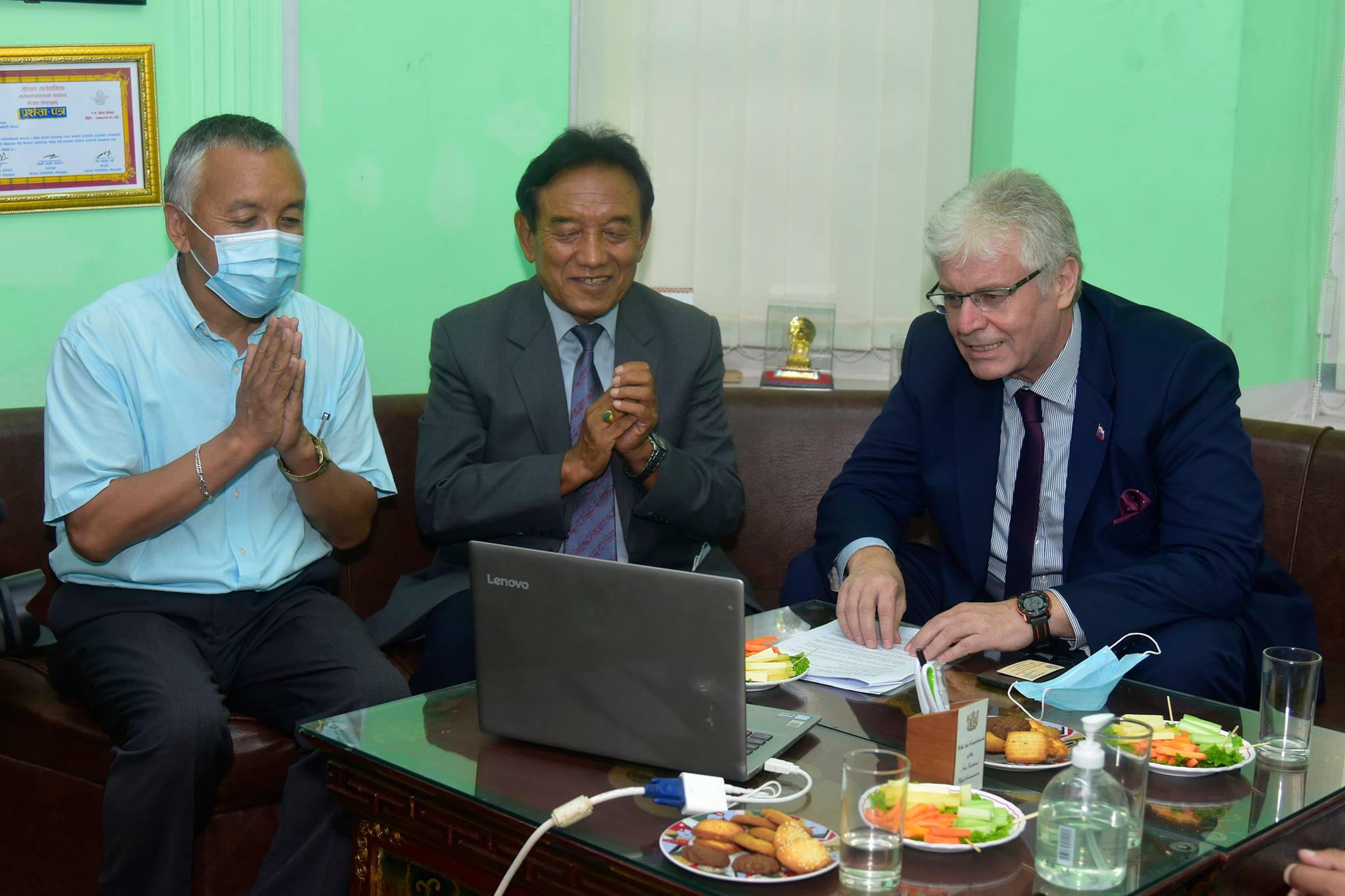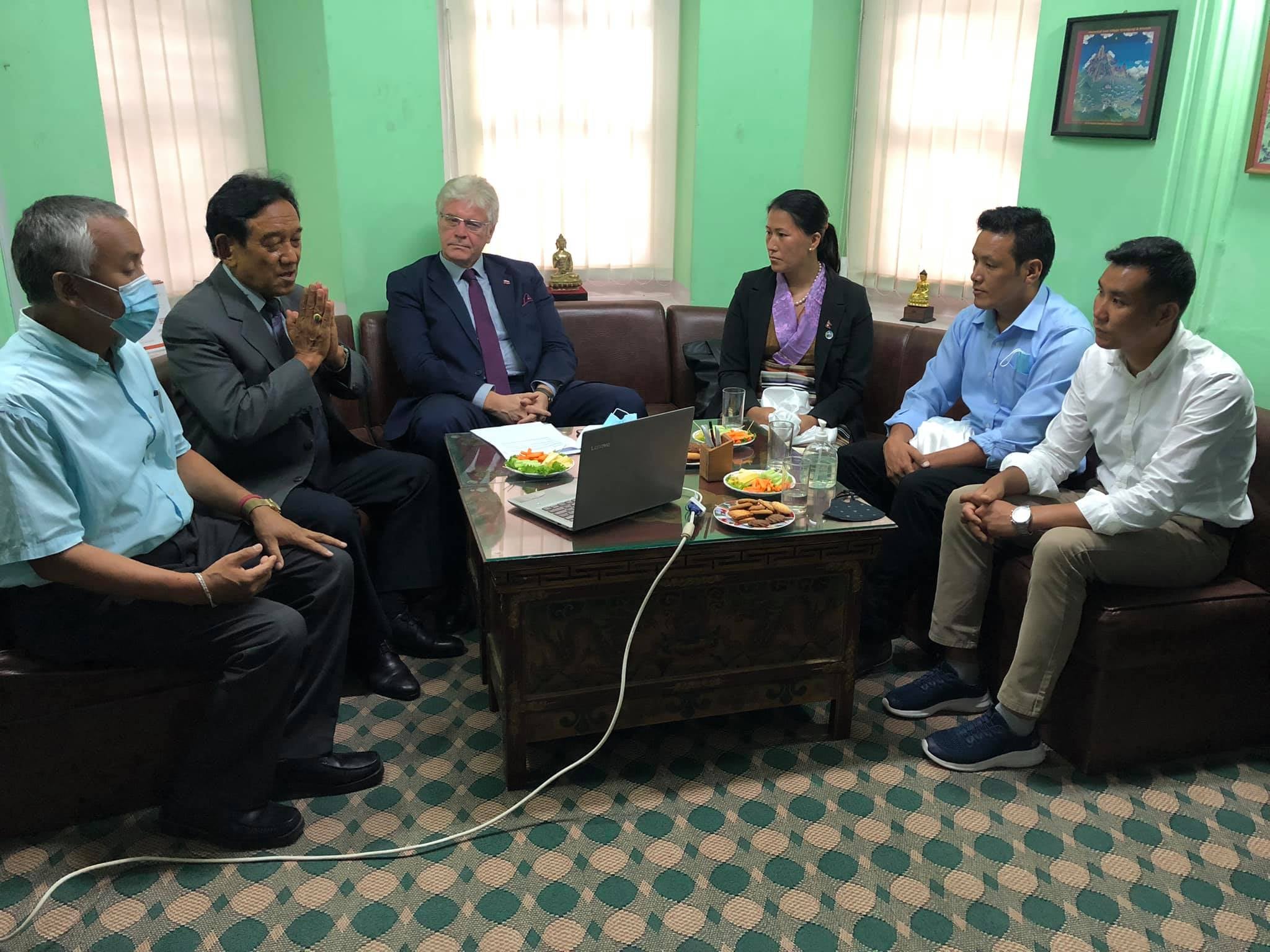Monju Community Drinking Water and Fire Hydrant
Monjo and Chhumoa villages lie adjacent to Sagarmatha National Park (SNP), a UNESCO World Heritage Site. These villages are also located at strategic destinations from a tourism and safety point of view. Although these villages are small in size, having 67 households with 277 population, more than 58,000 international trekkers with twofold of supporting staff pass through these villages. The changes and development in the tourism sector over the last decades in the Khumbu region have created new opportunities and challenges for the people of these villages. While tourism has brought much-needed income to the local people, it has also created a high demand for scare natural resources such as drinking water supply, forest resources, natural environment, etc. Moreover, there is also an increasing trend of local in-migration taking place over the last few years, particularly after the 2015 earthquakes. People from other areas are also attracted to these villages because of tourism business opportunities and safe refuge.
People of these villages belong to different levels of income, few of the households who own tourist lodges and teashops have good businesses and are economically well off, but people who still depend on agricultural practices are fairly poor and struggle to survive. Therefore, more than 50 percent of the local populations of these villages are still living to undersupply of basic human needs.
Safe, sufficient and sustainable water supply for cooking, washing, drinking, toilet, shower, fire hydrant, irrigation and cattle feeding in the basic requirement of these villages. There is a lack of regular and sufficient clean drinking water supply in these villages. A woman takes major responsibilities in household chores, operating lodges and teashops, agriculture and livestock activities, the lack of sufficient water supply has added an additional burden of workload to the women.
The implementation of rural water supply project has been on the high priority of the government planning in Nepal even though the achievement to provide safe drinking water through piped water supply is limited due to difficult geography for materials transportation, lack of perennial water source, high cost for a small project, scattered community settlement, etc. The government has set a target of providing drinking water supply facilities to all people to fulfill the global commitment; however, the target is yet to be met. Moreover, the emphasis has also been laid on the promotion of sanitation and personal hygiene maintaining linkages of these activities with water supply. As per the demand and request of the community to implement a water supply project, priority is to be given to those schemes which have water scarcity, hardship to fetch water, people’s commitment for participation and project sustainability.
The proposed Monju community water supply project is the type of project that is in line with the government’s interest area and the community’s urgent need. At the international level, it meets the sustainable development goal of the United Nations. This project is a Gravity Flow Water Supply Project with distribution by connecting pipes to each and every household. Also, the project aims to install Fire hydrant units at strategic places and use the surplus water for irrigation purposes.
Location
The Monjo community Water Supply and Fire Hydrant Project covers Monjo and Chhumoa villages in the Everest Trails of Khumbu Pasang Lhamu Rural Municipality, ward – 3, Solukhumbu District. This Rural Municipality is situated in the north-eastern part of the district. These villages also lie adjacent to the Sagarmatha National Park and are important tourism centers.
Accessibility
The project area lies in the north-eastern part of Solukhumbu with a minimum of 3 day’s walking distance from the district headquarter Salleri. There is little track opened a rough road from Salleri to Kharikhola and the local government is working hard to reach the road track opening project to the Municipality office at Chaurikharka by 2022. Another access to the project area is to take a half an hour’s flight from Kathmandu to Lukla airport and walk for five hours from Lukla airport.
Lukla is the main local market center of the area. However, because of the difficult transport system, all the construction materials are to be transported from Kathmandu or Salleri to the project area.
Beneficiaries and Socio-economic Condition
The present population of the proposed project area is 277 (139 female and 138 male) distributed in 67 households. Major inhabitants are Sherpa, Rai and Dalit people. Major spoken languages are Sherpa and Nepali. There are several institutions in the village which include one basic school, two monasteries, a check post of Sagarmatha National Park with security post of Nepal army, Himalayan Community Forest User Group, Khumbila Buffer Zone User Group, Monjo Khola Mini Hydro, Khumbila Woman’s Group, trekker’s ticketing counter of KPLRM and Monjo Water Management Committee offices. The major occupation of the people living in the area is tourism business and agriculture. Hotel and lodge business is the major income-generating source where the financial transaction takes place between buyers and sellers. However, the tourism business in the region is seasonal but the trend of trekkers visiting in the off-season is also increasing due to climate change. Besides tourism, people are engaged in agriculture and livestock farming business as well. More than sixty percent of the population is engaged in wage labor in agriculture, construction and trekking guide and porter job. But there are very few people in government or private institutions and firms.
Environmental Consideration
The proposed water supply project and its routes are surveyed in such a way that the alignment does not pass through the geologically unstable zones, wildlife territories and dense forest zones. The water and fire hydrant project does not bring and considerable environmental disruptions. Due attention has been given while selecting the site of the reservoir and other structures required for the water supply system. The project has considered the safe disposal of wastewater so that it does not create erosion, gulling and population hazards.
Sustainability of Project
To implement the project a water supply user’s committee should be formed comprising representation from social workers, women, key people of the community, people from all the clusters and geographic locations. The committee should be aware of the water project construction, operation and maintenance to sustain the system for 20 years’ design and more. Therefore potential local youth need to be capacitated in order to maintain a continued supply of the water system. The proposed system is fairly simple and can be managed by the beneficiaries through the water user’s committee. The committee should play a vital role during the construction to engage all the beneficiaries in every stage of implementation to create a sense of ownership.
The water system needs regular maintenance work; so the committee needs funds which are insufficient from kind contribution. For this, the committee can be managed through their own operation and maintenance fund by collecting money from each household in the beginning and monthly tariffs after project completion. In this period the beneficiaries need sufficient knowledge and skills to maintain the water system and for this, the committee can select some of the dedicated people to learn and train to operate and maintain the system through on-the-job training during project construction. The local government is also interested to support this water project for maintenance regularly as to run the project without interrupting in the future.
It can be assumed that if there are an adequate operation and maintenance fund, regular tariffs collection, enough skills for operation and maintenance, along with User Committee’s dedication and community mobilization, then the community can use the good water for a long period.
Project Cost
Item-wise rate is analyzed on the basis of Nepal Government’s norms, rates and prevailing rates of the local area. The total estimated cost of the project is NZ$ 267,059 (Nepalese Rs.20 million).





